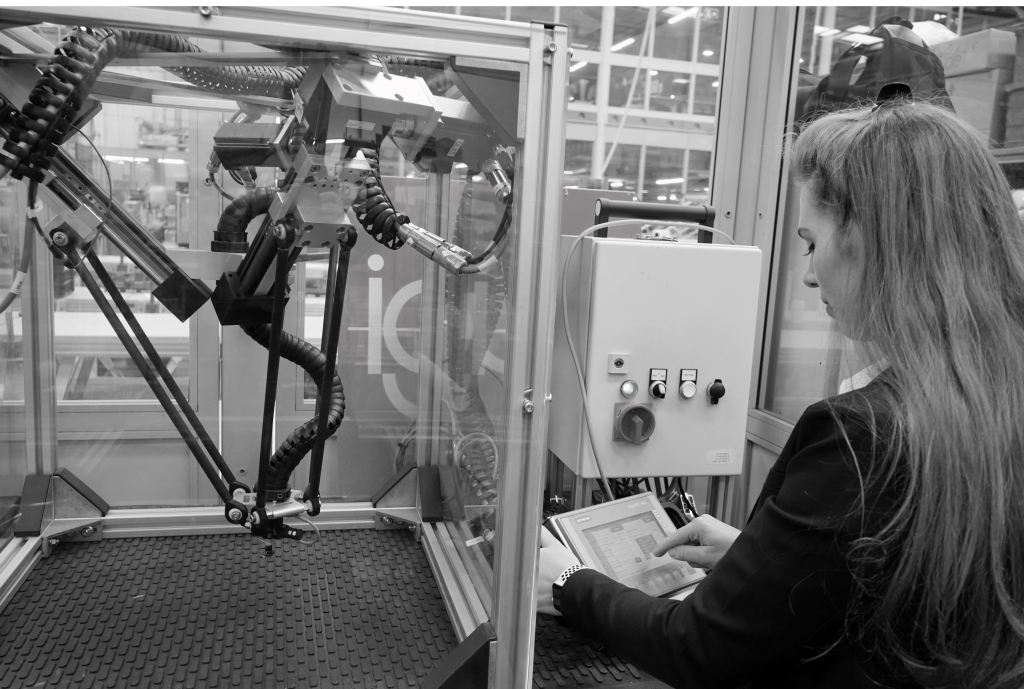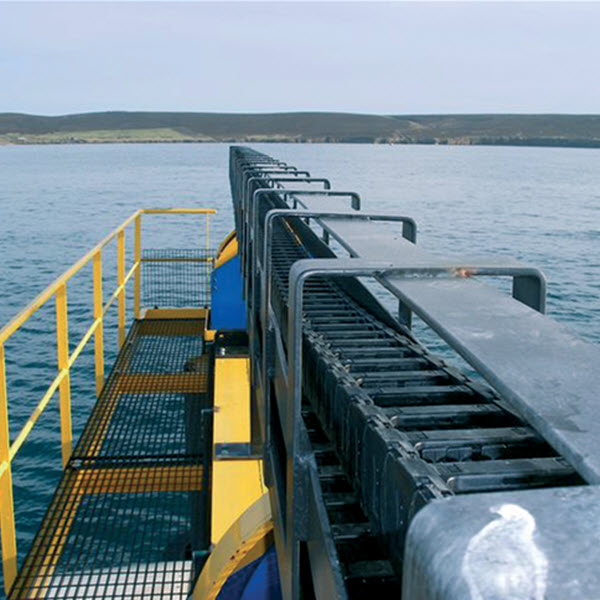How do we test the delta robot?

The igus® delta robot is tested at the igus® headquarters in Cologne, Germany. Given that the backbone hardware of this robot is drylin® linear technology, the tests used begin with single-axis tests for our toothed belt components – those which make up a third of the kinematics of the delta robot. We apply many extreme scenarios to the test rigs in this laboratory, in order to test a wide range of properties which our customers might expect from our robots. After testing is complete, results are displayed on a graph or chart so that customers can easily observe the capabilities of the delta robot.
The first step to testing the igus® delta robot
Firstly, to test pivoting wear rate, we use high speeds and varying angles for maximal evaluation of the parameters. This wear can occur on the linear bearings on many different areas of the robots, from the belt drives to the end rods and the linear bearings to the aluminium rails. The wear will arise in a different area each time a new working area, speed, or programme is employed, thus making our tests rigorous and highly varied. The wear on these components, however, is minimal and an awful lot less profound than that found on metal bearings and joints.
The polymers are long- life for a good reason and will not crash to a halt like a standard metal bearing, but instead will very gradually reduce in accuracy without breaking the entire system.

Step 2 to testing the igus® delta robot
For testing the payload capacity, we use loads of up to 200N at different speeds. We apply surface speeds of up to 0.01m/s to identify wear and heat effects from speed – this can help to identify issues where the robot might be exposed to very repetitive tasks at a short cycle rate. Furthermore, these tests are practised in multiple directions: vertically, laterally, horizontally, and inversely – these ensure that applications from any corner of industry can be solved. These applications can range from pressing and drilling, to picking and placing, or lifting and suspending.
It is important to note that while these tests are generally applied at room temperature, we can also perform them in our cold room to ensure bespoke results are achieved for specific customers. Heat is accounted for at the bearing level of our tests, which have been tested at up to 250°C.
Read more about the igus® delta robot here
Visit the website to find out more about the igus® delta robot.
Alternatively, contact our Product Manager Adam Sanjurgo: asanjurgo@igus.co.uk for any delta robot enquiries.




